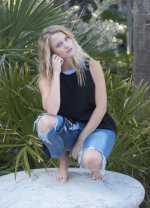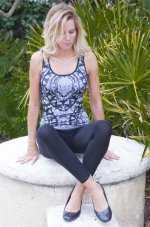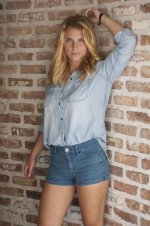I wrote a long post but my internet connection dropped so here is an abbreviated version
Humans, and all animals so far tested, have a high sensitivity for eyes, and can spot eyes much more quickly than other parts of an animal. It is part of our survival evolution. People shot look less real, less personal when the closest eye it not sharp. The rest of the body can be out of focus and the impression is still an intimacy of connecting to another human. A sharp body and not sharp eyes are less engaging for humans. Nail the eye closest and all manner of other options work: sharp body, blurred body, just out of tack sharp body, sharp or blurred background, anything works if the eyes are sharp. If a rear eye is sharper than a near eye, it makes us uncomfortable, but usually do not know why.
Posing is the hardest element of people shooting to master and the one that impacts the impressions most of all. The basics of focus, exposure and DOF are simple, and almost automatic. Creative lighting, and posing are THE differences between a snap shot and portraiture.
The first photos has a few problems what cause it to be less than flattering. The pose compresses the lower body in addition to the compression effect of shooting down on a human body. That gives an impression of more mass and thickness, heavier.
Cameras see the world as a 2 d plane and we see the world with binocular vision that gives a slight wrap around effect so we see a subject as having depth so "see" the plane as not being flat but wrapping around. The flat plane of a sensor gives the impression of being wider for curved objects like a leg or head than we perceive with 2 horizontally spaced eyes. So to give a more similar impression in a 2 d image compared to our vision, we need, as photographers, to trick the viewer into seeing depth or narrowing clues. One way to create the impression of less 2d thickness is to create space between limbs and the trunk. Or to bend joints even a little...wrists, fingers, elbows, tilt of head, flexing a back, creating triangles of limbs and out of optical path of the trunk of the body, and crop where there is an impression of narrowing as the image comes to an edge of the frame.. Shooting down shortens the trunk and legs but does not narrow the width so only really skinny subjects look normal shooting down.
Another issue is any show of pressure or effort is amplified by the camera. To look relaxed, no pressure points should be visible. For example her toes are obviously stressed in that position and there is no way to make them look relaxed while doing that much work. Hide them it that are working or support her so her feet seem effortlessly in contact with the ground. The same applies to touching any part of the body with hands or fingers, very light barely touching is the key to having the fingers look relaxed. A common mistake that is unflattering is to have the subject touch their face with hands. It is possible to be a good pose but only if the fingers show no sign of tension and the face is not indented at all. With our binocular vision that impression is not critical but in a photo that pressure is amplified and looks stressed.
A good way to help visualize what the camera is going to see it simple close one eye and move side to side a little to see how the shape and impression of depth changes by moving your head 1-2 inches. For the same reason of creating depth, few photos look natural in body proportions when straight on to the camera axis. Shape and definition are gained by turning the trunk of the body to an angle. Again, our binocular vision can see depth and shapes of a body while the camera just sees a 2 d flat plane, so we have to give the camera an angle to show curves and contours.
It is not easy to learn posing but that is why those who have developed the skill and ability to direct a subject simply and with confidence are some of the most well paid photographers in the world.
Good luck. If you want to get serious about figure and portrait photography, seeking out a photographer whose work you admire and ask for personal workshop or advice would be well worth its cost.



